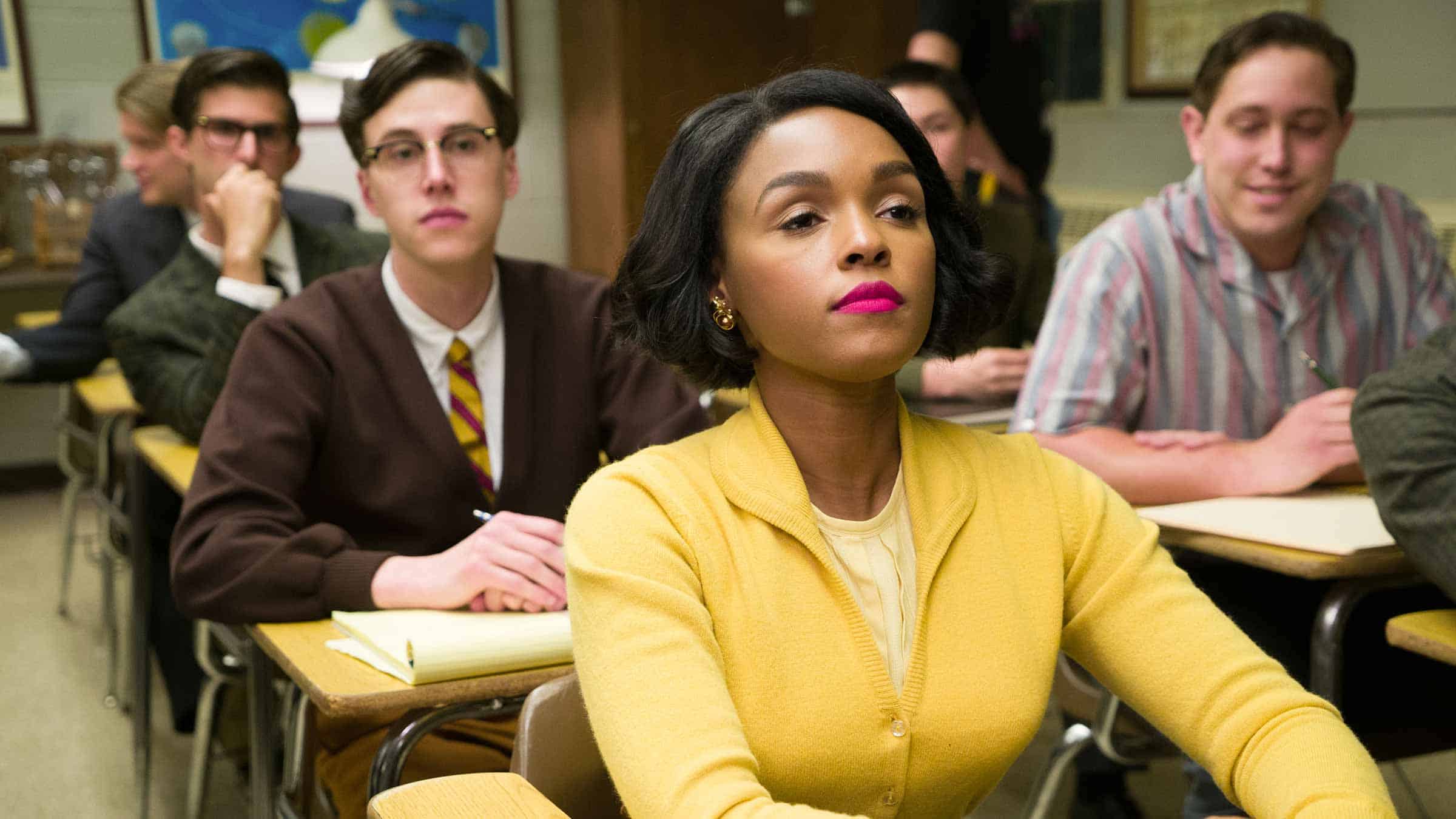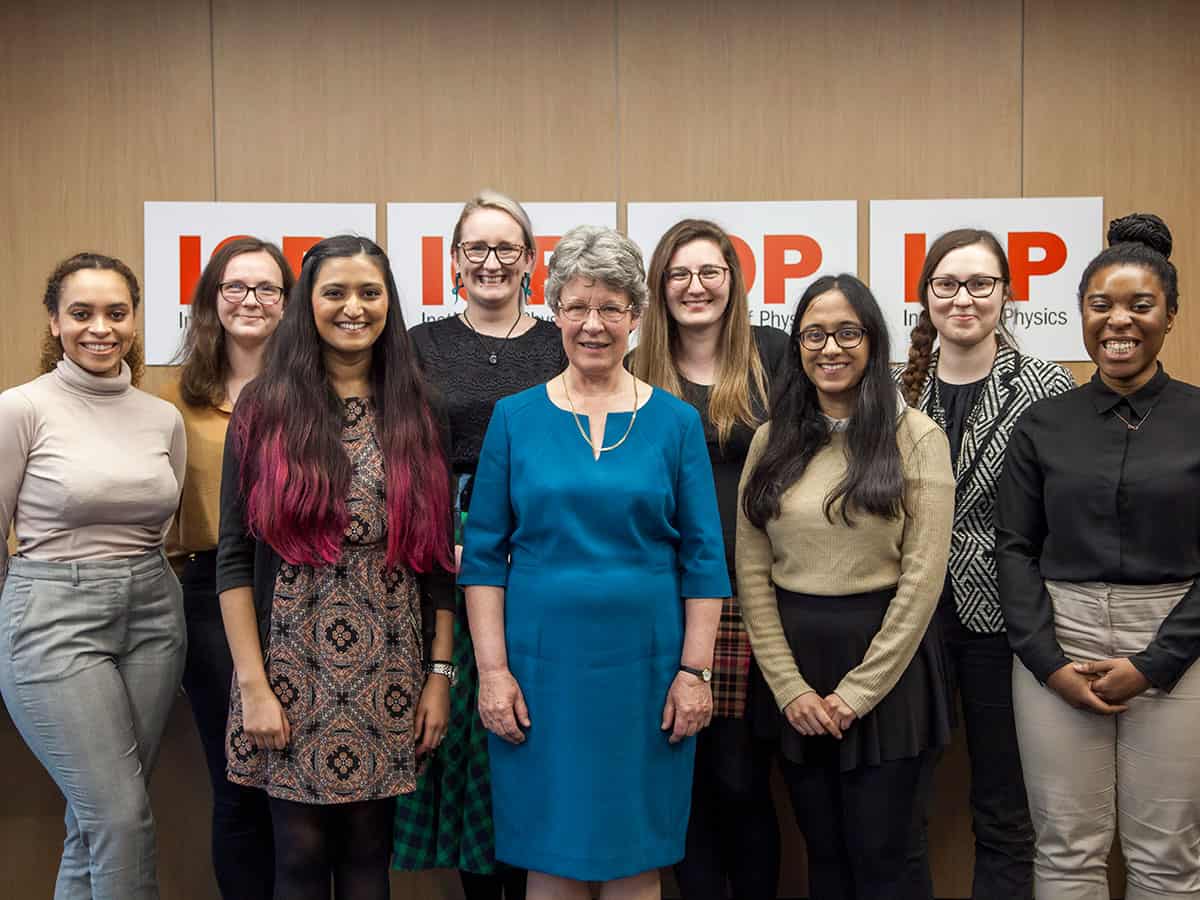The lack of diversity among physicists is an ongoing problem – and, while it persists, physics will fail to achieve its full potential. Jess Wade and Maryam Zaringhalam discuss the implications of poor diversity in the field and how it could be overcome

For women physicists, the past 12 months have seen some historic accomplishments. In September 2018 Dame Jocelyn Bell Burnell’s 1967 discovery of pulsars was recognized with a Special Breakthrough Prize in Fundamental Physics. She immediately invested her $3m prize to support the postgraduate research of scientists from underrepresented groups. In October 2018 Donna Strickland became the third woman in history to win the Nobel Prize for Physics, for her work on high-intensity, ultrashort optical pulses. Three women also hold top positions in the scientific community. Dame Julia Higgins, a polymer scientist, is president of the Institute of Physics; medical statistician Deborah Ashby is president of the Royal Statistical Society; and the president of the London Mathematical Society is the mathematician Caroline Series.
Despite these successes, however, the demographics inside physics classrooms and laboratories have not improved. In the UK in 1986 girls made up 23.1% of the physics A-level cohort, but only 22.2% in 2018. Indeed, in 2018 women made up 57.5% of all undergraduate students in the UK, but only 22.2% of physics undergraduates – and only 1.7% of all physics undergraduate students were black women. In a 2018 study, Luke Holman at the University of Melbourne in Australia and colleagues predicted we are 258 years from gender parity in authorship of peer-reviewed physics publications (PLOS Biol. 16 e2004956).

The consequences
The lack of diversity in physics is not only an issue of inequality; it affects the physics we do and the systems we create.
In the UK, the House of Commons Science and Technology Select Committee exists “to ensure that government policy and decision-making are based on good scientific and engineering advice and evidence”. But when the committee announced its new membership in 2017, it was 100% men – potentially giving the impression that the opinions of women, who make up half the population, were not as important. In response to the resulting public outcry, the committee appointed three women, including a mathematician (Vicky Ford MP) and a physicist (Carol Monaghan MP).
In 2018 a Freedom of Information request from the Guardian newspaper showed that 90% of Engineering and Physical Sciences Research Council (EPSRC) funding went to projects led by men. The 10% of successful women applicants were awarded less money, less lab space and fewer opportunities to supervise students and postdoctoral fellows. Later that year it was revealed that white men from prestigious universities are considerably more likely to gain access to the Hubble Space Telescope (men had a 24% success rate, women just 13%).
Women’s underrepresentation in science also has serious consequences for how research is conducted and applied. When women, and particularly those from further marginalized backgrounds, are not afforded a seat at the table, they cannot correct for the biases that are incorporated into experimental design and downstream application. For example, Joy Buolamwini, a researcher in the Media Lab at the Massachusetts Institute of Technology (MIT), has demonstrated that facial recognition technology is biased against women and people of colour due to inadequacies in the datasets (Proceedings of Machine Learning Research 81 77). Women have also been underrepresented or outright neglected as subjects in health research, which can have life-threatening repercussions. A lack of understanding of how health problems progress in women’s bodies can result in misdiagnosis of, for instance, heart attacks, and incorrect dosages of medicines meant to prevent or treat disease. Additionally, women’s pain has often been dismissed by the medical profession, due in large part to implicit biases that see women as the weaker gender, a phenomenon known as the “gender pain gap”.
Physics will fail to achieve its maximum potential as long as the gender gap – and similar inequities – persists.
An unfair beginning
This lack of representation is often attributed to the myth that girls and women are intrinsically less well suited to science, technology, engineering and mathematics (STEM). Indeed, the “greater male variability hypothesis” is routinely used to explain the overrepresentation of men. This hypothesis puts forward the idea that there is a greater variability in men’s aptitude for science, which means there are men both outperforming and underperforming women. In other words, while some men will underperform women, there are more exceptionally high-performing men compared with women who exceed the performance threshold for academic success.
Multiple studies have debunked that idea, including a 2018 study of 1.6 million students from 268 high schools around the world (Nature Comms 9 3777). Although it found that girls’ academic performance in STEM subjects was less variable than boys’ – on the face of it supporting the theory – the study demonstrated that, on average, girls received slightly better STEM grades than boys, and that the variance of grades was less than in non-STEM subjects. This finding therefore implies that the variability hypothesis is insufficient to explain the lack of gender diversity in STEM. Furthermore, in the UK, girls actually achieve higher grades in their physics GCSEs (usually taken at the age of 16) than boys, but are considerably less likely to choose it for A-level (taken at 18). According to the Improving Gender Balance project from the Institute of Physics (IOP), which publishes Physics World, the gender gap in physics is not due to aptitude or interest. While girls have long outperformed boys at GCSE maths and physics, they lack the confidence to take it for A-level. Girls and women are discouraged from pursuing physics due to the gender stereotypes and unconscious bias they experience in school and society.
Stereotypes of how science is done present an additional barrier to entry. Physics is often portrayed as a solitary endeavour; the occupation of lone, socially awkward geniuses with little understanding of the real world. Of course, this paints a false picture of how physics is done, which is namely through active collaboration and globally co-ordinated efforts. The public image of physics fundamentally misrepresents the role science has in our society – how it furthers our understanding of the world, how the application of fundamental research improves lives, and how it allows us to gather evidence to craft interventions that will sustain our planet. Changing how the process and purpose of science is represented can therefore be effective in attracting communally oriented individuals, regardless of gender.


Representation of women scientists in the media also plays an important role in shaping girls’ and women’s ideas of what they can be. The 2016 film Hidden Figures, which follows the true stories of three black women mathematicians at NASA, broke box-office records and catalysed STEM education initiatives aimed at increasing the representation of women of colour. Nevertheless, women continue to be underrepresented in mainstream media. Only 19% of children’s books feature a girl as the main character, and less than 1% are led by a character who is a person of colour. According to a 2018 report, women scientists only account for one-third of STEM characters in film, television and streaming today; and when they are on screen, more often than not those characters are white.
Lack of recognition of women’s notability extends beyond the media. Women make up only 17.8% of biographies on Wikipedia, 20% of people on UK banknotes (0% in the US) and 21% of people in UK statues (8% in the US). The absence of women on screen, on air, in print and online further perpetuates the idea that women have not made significant contributions to society, which could not be further from the truth.
Since the beginning of 2018, we have been mass-editing Wikipedia to create and improve the biographies of women scientists and engineers. We have hosted “edit-a-thons” at conferences, including the annual meeting of the American Physical Society, as well as in high schools and universities. Between us we have so far written about 700 biographies of people who might otherwise have been overlooked.
Systematic inequality
If you’ve ever considered the underrepresentation of women in senior science positions, you will probably have heard of the “leaky pipeline”. This model, which is cited in more than 10,000 academic articles, is routinely used to explain the lack of women at the top. According to the leaky-pipeline model, when the going gets tough, the women leave. Not only does the model ignore the important role scientists have outside academia, it doesn’t tell the whole story: women aren’t failing at science, science is failing them. The pipeline isn’t leaking. Instead, it’s littered with holes by design.
Progression through the academic pipeline depends on several metrics: the amount of funding you bring in, the number of papers you publish and the evaluation of the classes you teach, all of which have been shown to favour men. Whether it is at high school or university (Phys. Rev. Phys. Educ. Res. 12 020107), student evaluations favour male academics, particularly native English speakers, even when women teach exactly the same course (PLOS ONE 14 e0216241). Women academics are less likely to be asked to be involved with peer review (Nature 561 295), less likely to have their papers accepted and less likely to be cited than their male colleagues (Socius 10.1177/2378023117738903).
After concern about unconscious bias creeping into the judgment of scientific proposals, the Irish Research Council anonymized its application process, and ended up with women outperforming men. Nevertheless, anonymization remains uncommon despite being a relatively simple approach to mitigate gender bias in assessment.
While women are discriminated against in the allocation of research funding, they take on a disproportionate amount of academic “service roles” – such as administration and teaching – which require a great deal of time and energy. These service roles can increase the appeal of a given academic institution and are vital for improving the workplace culture, but they often go unrecognized and unrewarded in promotion criteria. Women and people of colour are also routinely omitted from the nominee pool for scientific awards (Nature 565 287). Such recognition can have a significant impact on a scientist’s career: improving their self-concept, future prospects and how they are treated by their home institution. It is interesting to note that, while underrepresented in prestigious science awards on the merits of research, women are overrepresented in awards for advocacy and teaching, perhaps because service roles are often coded as “women’s work”. Certainly, the structures within the academic pipeline seem to benefit and praise certain groups while further marginalizing others.
Sexual and gender harassment
The power imbalances of academia and culture of silence can result in bad behaviour that goes unchecked. A recent survey of 455 US undergraduate women physicists revealed that 74.3% had experienced sexual harassment (Phys. Rev. Phys. Educ. Res. 15 010121). The US National Academy of Sciences (NAS) found that two-fifths of postgraduates and half of medical students had experienced sexual harassment. Scientific societies such as the American Geophysical Union and the NAS are beginning to develop policies that equate sexual harassment with scientific misconduct and oust known harassers from their membership.
The power imbalances of academia and culture of silence can result in bad behaviour that goes unchecked
While the US has legislation that prohibits sexual harassment at government-funded education institutions, which is known as Title IX of the Education Amendments Act, legislation in the UK isn’t always so clear. In a survey of almost 2000 students, the UK-based organization The 1752 Group reported that sexual harassment of students by university academics is “rife”, but with no clear policies in place, it is rarely reported and often silenced. Indeed, the BBC used a Freedom of Information request to identify that UK universities spent £87m on pay-offs with non-disclosure agreements between 2017 and 2019. Science has done little to support whistleblowers. BethAnn McLaughlin – a neuroscientist who founded the nonprofit #MeTooSTEM to shed light on the harassment of women in academic science – has lost her tenure because of her activism. Meredith Whittaker, a computer scientist and expert on artificial intelligence, led the Google Walkout to challenge mishandling of claims of sexual harassment, and consequently faced retaliation from her employer for speaking up. In July 2019, she left Google to work full-time at New York University’s AI Now Institute, which Whittaker co-founded and focuses on ethical questions surrounding AI.
Best practice
Intersectionality was coined by Kimberlé Williams Crenshaw – a civil rights activist and scholar of critical race theory – in 1989. It recognizes the various social categorizations that apply to an individual and can contribute to “overlapping systems of privilege and oppression”. To achieve true gender equity, we must therefore recognize that not all women have the same experience, and that women of colour, in the LGBTQ+ community, with disabilities, or from other marginalized backgrounds face different forms of discrimination that must be addressed.
Considering an intersectional framework is essential for institutions to work towards improving the gender balance, and to ensure that their initiatives and policy interventions maximize equity. A growing body of research shows that initiatives geared towards women tend to advance white women at the expense of women of colour. As a result, a “one size fits all” approach to advancing women in STEM is insufficient to enjoy the full benefits that diversity and inclusion bring to science.
Unfortunately, diversity campaigns rarely have any impact, can result in illusions of fairness, and – at their worst – trigger poorer behaviour toward women and other underrepresented groups. There are several reasons for this, one being that the major focus of these campaigns is on individuals rather than systemic change – it’s cheaper to offer diversity training than try to change institutions. There are countless scientists who, despite evidence to the contrary, think improving diversity might contravene their meritocracy. And the leaky-pipeline model perpetuates an idea that we have to “fix” women rather than the system.
In the mid-1990s tenured women faculty at MIT’s School of Science collected information about their professional lives. They found that women were marginalized throughout their academic careers; with smaller allocations of space, reduced access to resources, less recognition for their work and exclusion from top-level decision making. The newly formed Committee on Women Faculty made several recommendations to steer MIT towards more gender parity, including appointing more women for influential leadership positions, replacing administrators with a track record of discrimination, ensuring pay equity, reducing stigma around childbearing and family leave, and reforming recruitment practices. A 2011 follow-up report reflected improvement, pointing to increased numbers of women faculty in the School of Science, from 8% in 1994 to 19% by 2010. The report did still highlight problems that remained, such as disproportionate expectations placed on women to take on time-consuming service positions and continued systematic exclusion and devaluing of women faculty by senior men.

Since the mid-2000s the IOP’s Juno Award and the Equality Challenge Unit’s Athena Swan Charter have recognized departmental commitments to improving the environment for women scientists. As of 2019, similar schemes have been established in Canada (Made-in-Canada), America (Sea Change) and Australia (Science in Australia Gender Equality, SAGE). These awards recognize that diversity doesn’t happen without inclusion – that is, efforts to increase the representation of women, people of colour or LGBTQ+ physicists won’t last unless they are made to feel welcome and able to contribute.
The Royal Society of Chemistry’s 2018 Breaking the Barriers report called for cultural change within academia, and identified three key challenges to women’s progression: short-term funding and out-of-date metrics of success; poor academic culture; and difficulties balancing responsibilities with family life. Improving diversity in academic science can often feel like an impossible task – but there are simple steps we could all take to make it more fair for everyone.
- Better careers advice, discussions about stereotypes and whole-school commitments to gender equality can have a marked impact on the proportion of girls who study physics at high school.
- Social media has transformed the opportunities for marginalized communities, turning the experiences that isolated women and people of colour often endure in scientific research into a chance to share ideas with a network of like-minded individuals around the world. In the past few years a number of international communities have formed, including 500 Women Scientists, 500 Queer Scientists and Minorities in STEM. These organizations raise awareness around issues affecting underrepresented communities in STEM, while increasing the visibility of scientists from diverse backgrounds and experiences.
- Institutions and conference organizers should ensure that they have enforceable codes of conduct in place, which define the behaviour expectations on behaviour of all staff and outline a clear disciplinary process.
- From refusing to sit on manels (all-male panels) to supporting women on social media, men have a considerable role to play in challenging inequity in science.
- Appointing mentors to students and early-career researchers from underrepresented groups can transform their experiences, improving their confidence and likelihood to stay in science.
- Universities that have better access to shared parental leave and childcare have more women professors on their staff.
- A more equitable institutional merit system must factor outreach, mentorship and service efforts into considerations of tenure, institutional awards and promotions.
On reporting results on the pervasiveness of gender harassment in physics departments, Lauren Aycock, a AAAS Science and Technology Policy Fellow at the Department of Energy, said “A lot of times, people study how women can change to better fit in a field or be more successful…perhaps physics needs to think about changing itself.”
- Note: this article has been updated since publication in the August 2019 issue of Physics World.
Jess Wade (click link below for full bio) has been recognized in the Queen’s Birthday Honours 2019 for services to gender diversity in science, @jesswade. Maryam Zaringhalam is a Science and Technology Policy Fellow of the American Association for the Advancement of Science based in Washington DC, US. She is a senior producer for the podcast and show The Story Collider and serves on the leadership team for 500 Women Scientists, @webmz_



